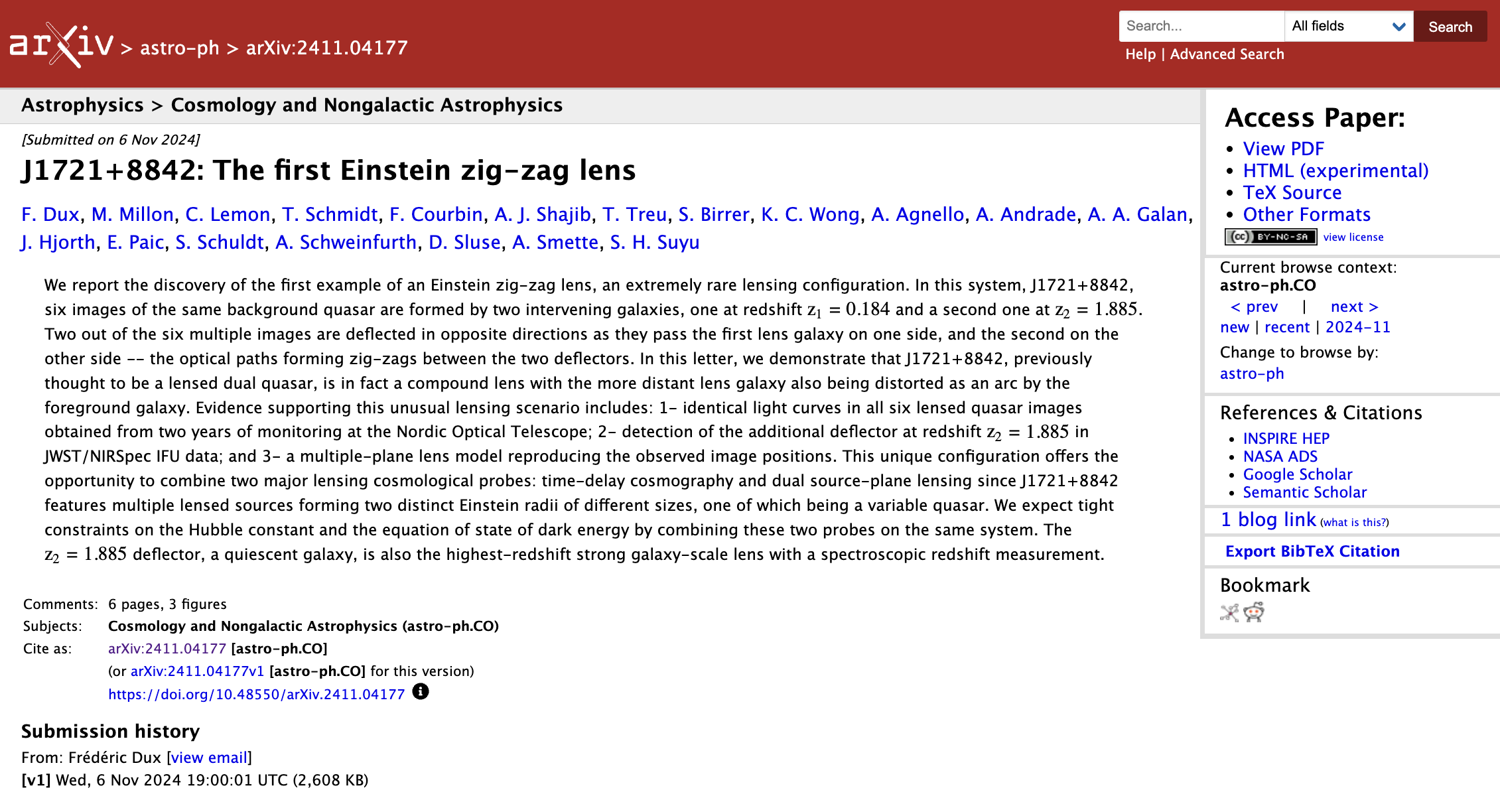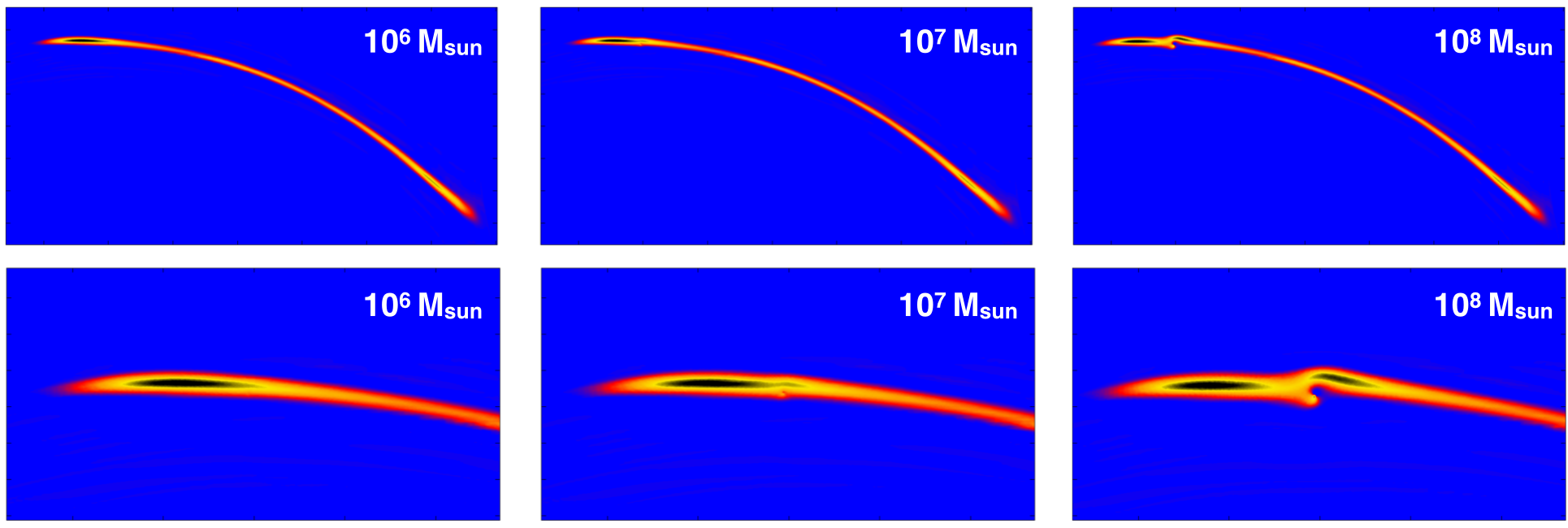Lens prior matching with
latent diffusion models
SKACH winter meeting 2025
2024/27/01, ISSI Bern
 Philipp Denzel, Y. Billeter, F.-P. Schilling, E. Gavagnin @ ZHAW
Philipp Denzel, Y. Billeter, F.-P. Schilling, E. Gavagnin @ ZHAW
L. Stanic, G. Piccoli, T. Doucot, M. Bussmann, P. Saha @ UZH
SKACH winter meeting 2025
2024/27/01, ISSI Bern
 Philipp Denzel, Y. Billeter, F.-P. Schilling, E. Gavagnin @ ZHAW
Philipp Denzel, Y. Billeter, F.-P. Schilling, E. Gavagnin @ ZHAW
L. Stanic, G. Piccoli, T. Doucot, M. Bussmann, P. Saha @ UZH
Strong gravitational lens prior
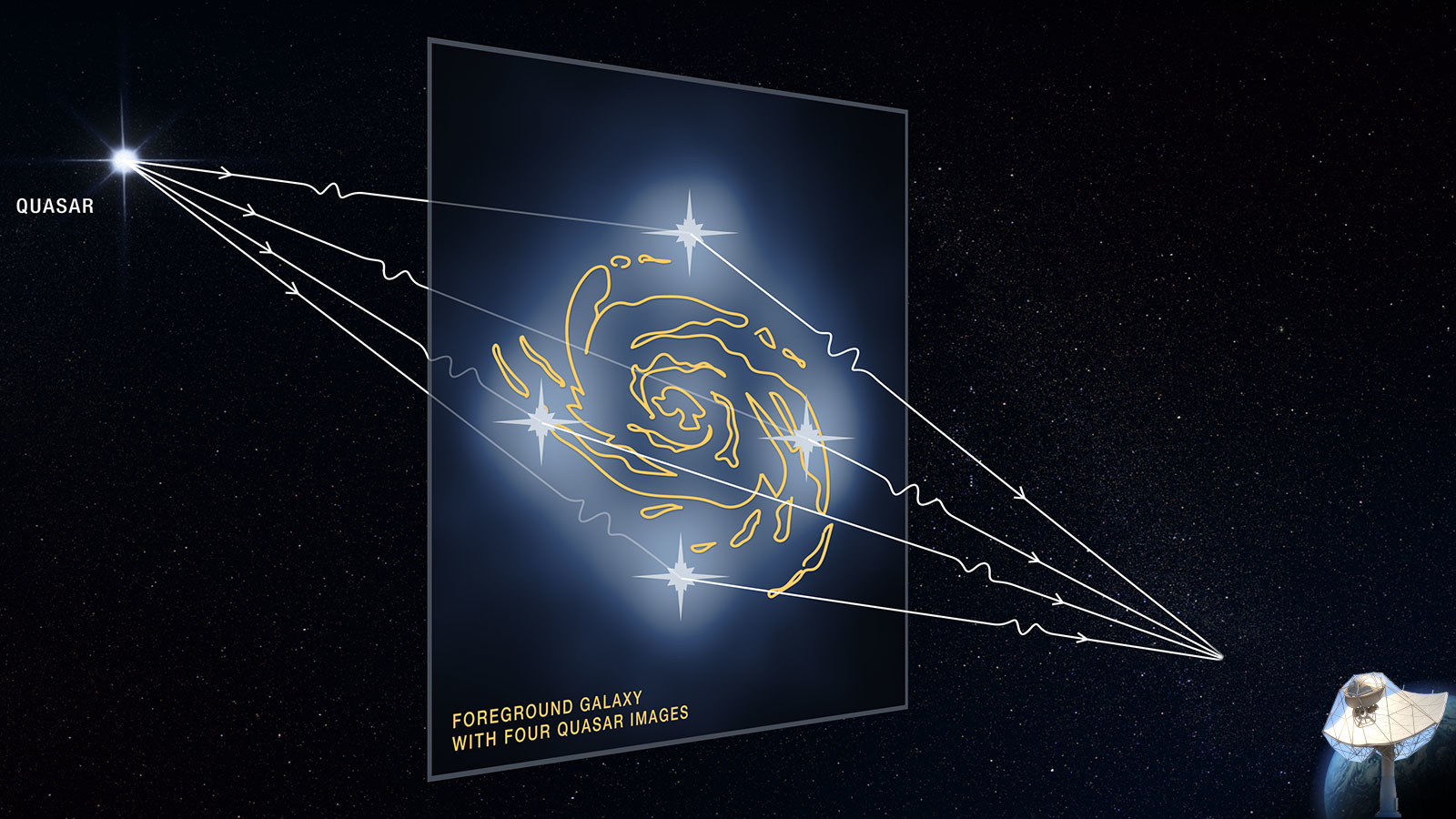
Credits: NASA/ESA
Strong gravitational lens prior
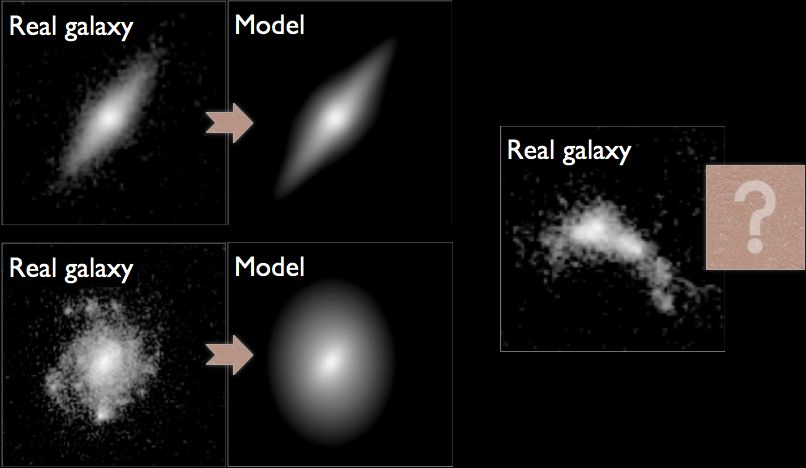
Figure 1: Mandelbaum et al. (2014)
Map-to-map translation
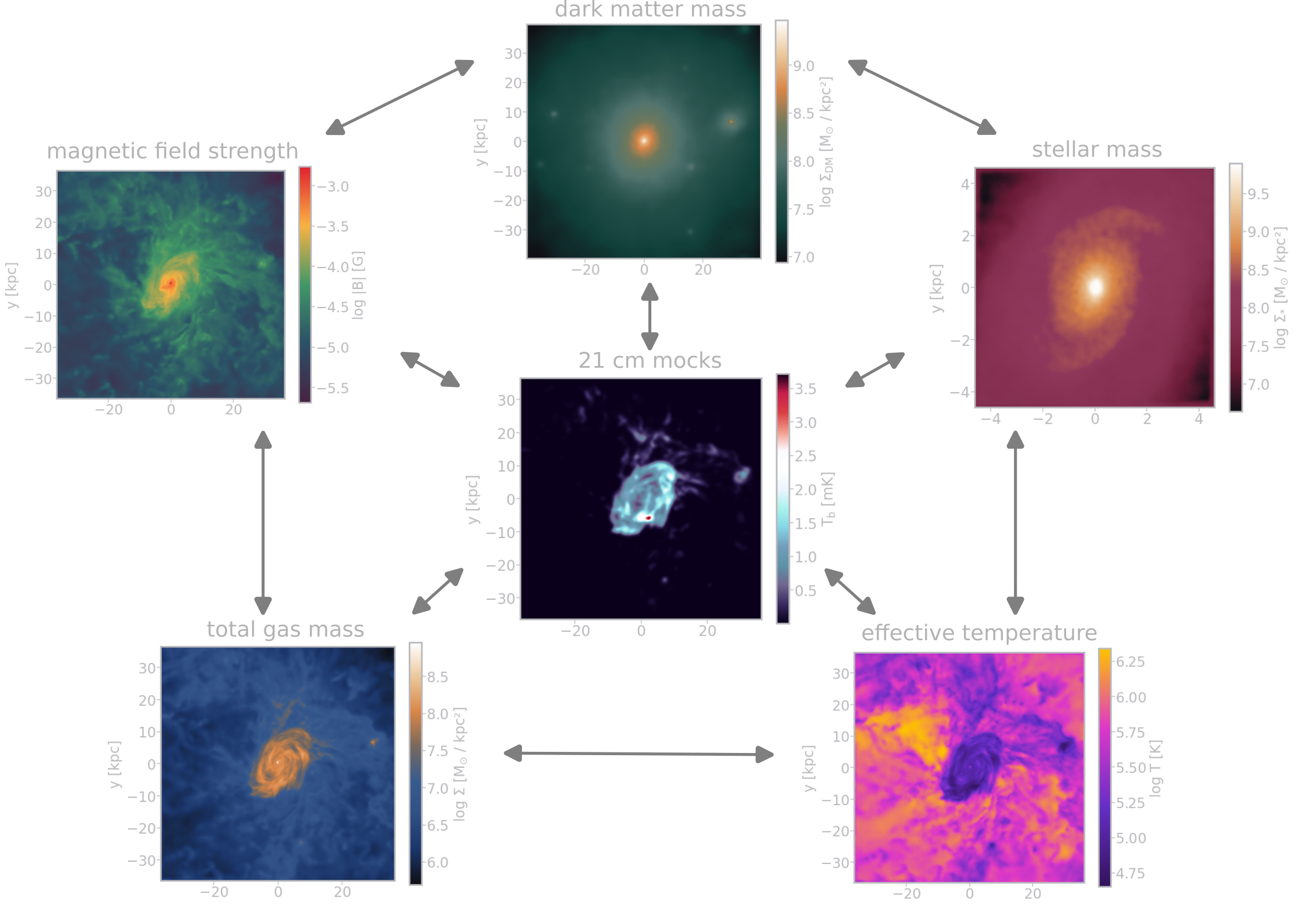
Figure 2: Denzel et al. (2025, in prep.)
Generative deep learning for galaxies
- Recent work:
- map-to-map translation of simulated galaxies
- Roadmap to a physical & plausible lens models:
- Physical model: map-to-map translation models
- Sampling halos: (random/guided) generation
- Applications to observations
Deep generative models
- match some data distribution \(p(x)\) with a neural network \(p_\theta(x)\)
- our models are trained on simulated galaxy samples \(\Gamma_{i}\)
- caveat: each simulation implements a specific feedback model \(\phi\)
- unconditional generation of galaxies \(g\):
\( g \sim p_\theta(\Gamma | z; \phi) \quad \text{where}\quad z\sim\mathcal{N}(0,1) \) - conditional generation of galaxies \(g\) including some information \(c\):
\( g \sim p_\theta(\Gamma | z, c; \phi) \)
Which generative model?
- depends on use case… for strong gravitational lensing we need:
- efficient, fast, good distribution coverage
- optionally choose Einstein radius
Latent diffusion
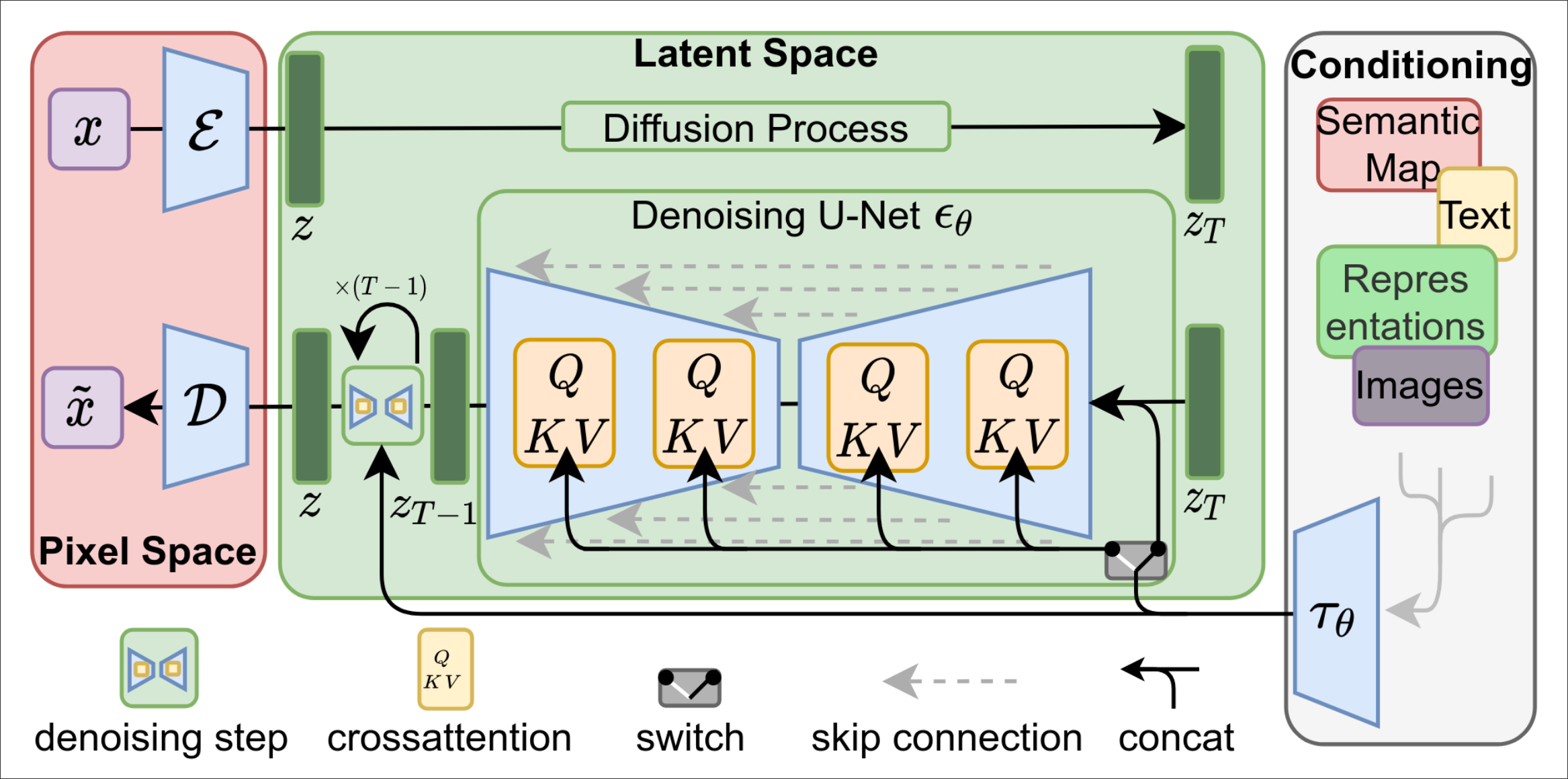
Figure 3: Latent diffusion by Rombach et al. (2022)
Key ingredient
Key ingredient
Regularization of the latent space
Regularization of the latent space
Diffusion
Current status
- basic VAE version is trained
- regularization of latent space is difficult…
- results need fine-tuning, more elaborate objective
\(\mathcal{L}_\text{VQGAN} = \mathcal{L}_\text{L2} + \mathcal{L}_\text{KL/VQ} + \mathcal{L}_\text{PatchGAN} + \mathcal{L}_\text{LPIPS}\) - some samples from recent VAE trial runs:
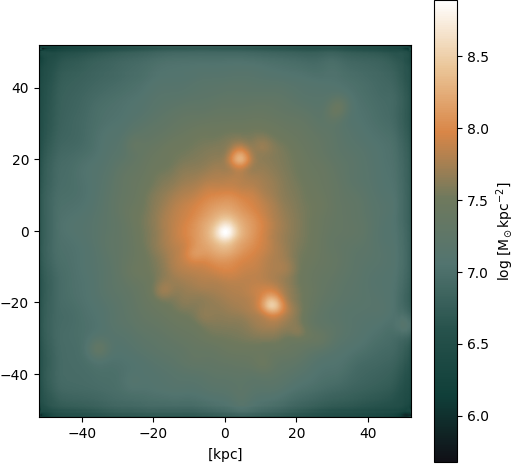
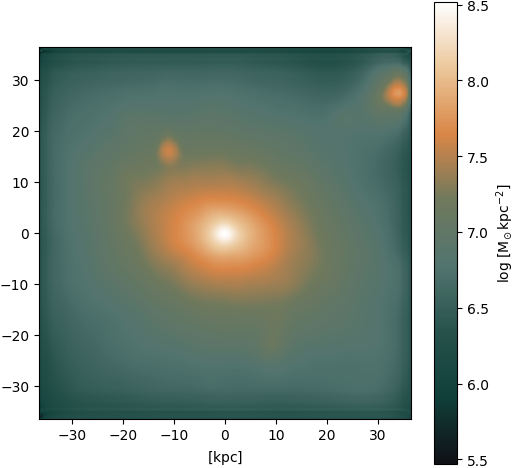
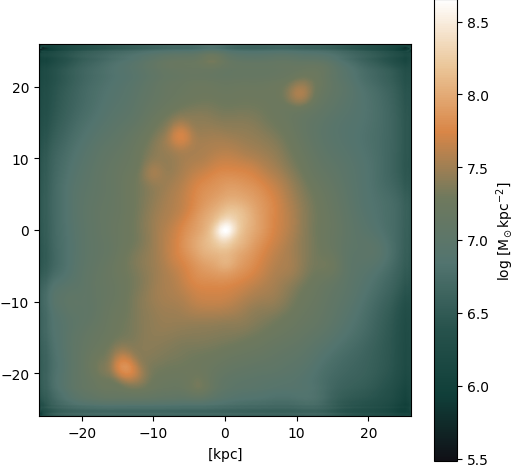
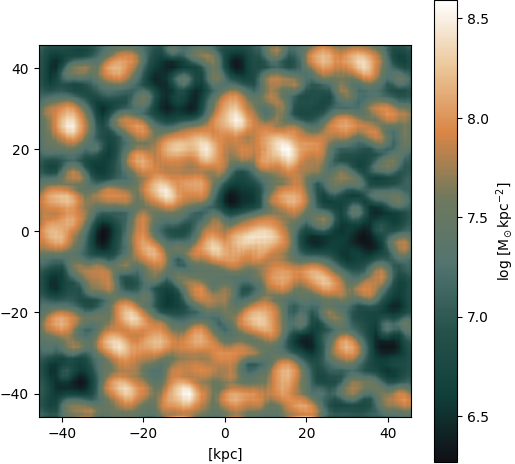
Application: Strong gravitational lensing
A lens with an interesting history
- The "polar" quad (time delays without seasonal gaps)
- First discovered in Gaia D2: Lemon et al. (2018)
- as a quadruply imaged quasar
- Confirmed PDLA by Lemon et al. (2022)
- Proximate Damped Lyman-\(\alpha\) Absorber quasar

Lemon+ (2018)
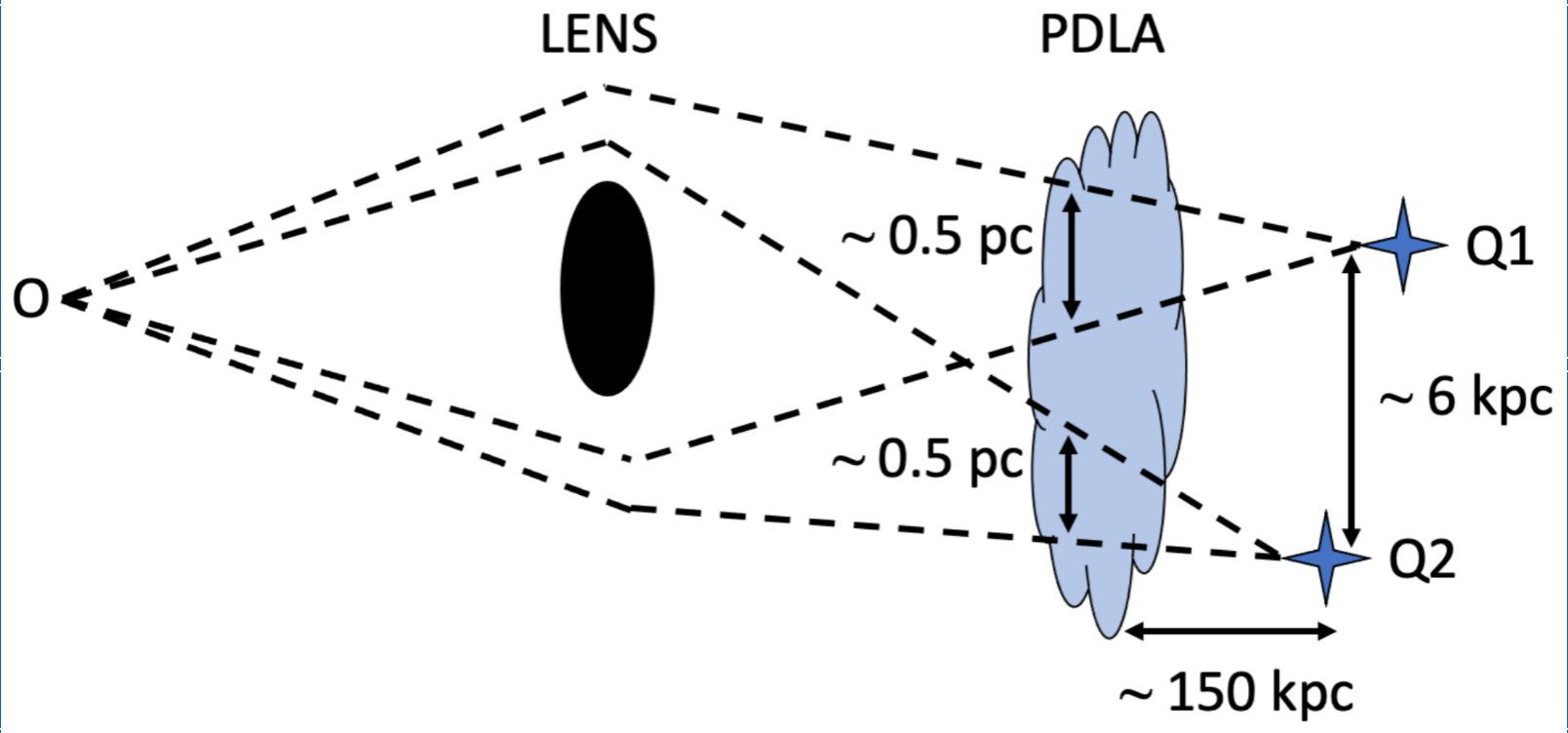
Lemon+ (2022)
Zig-zag lens
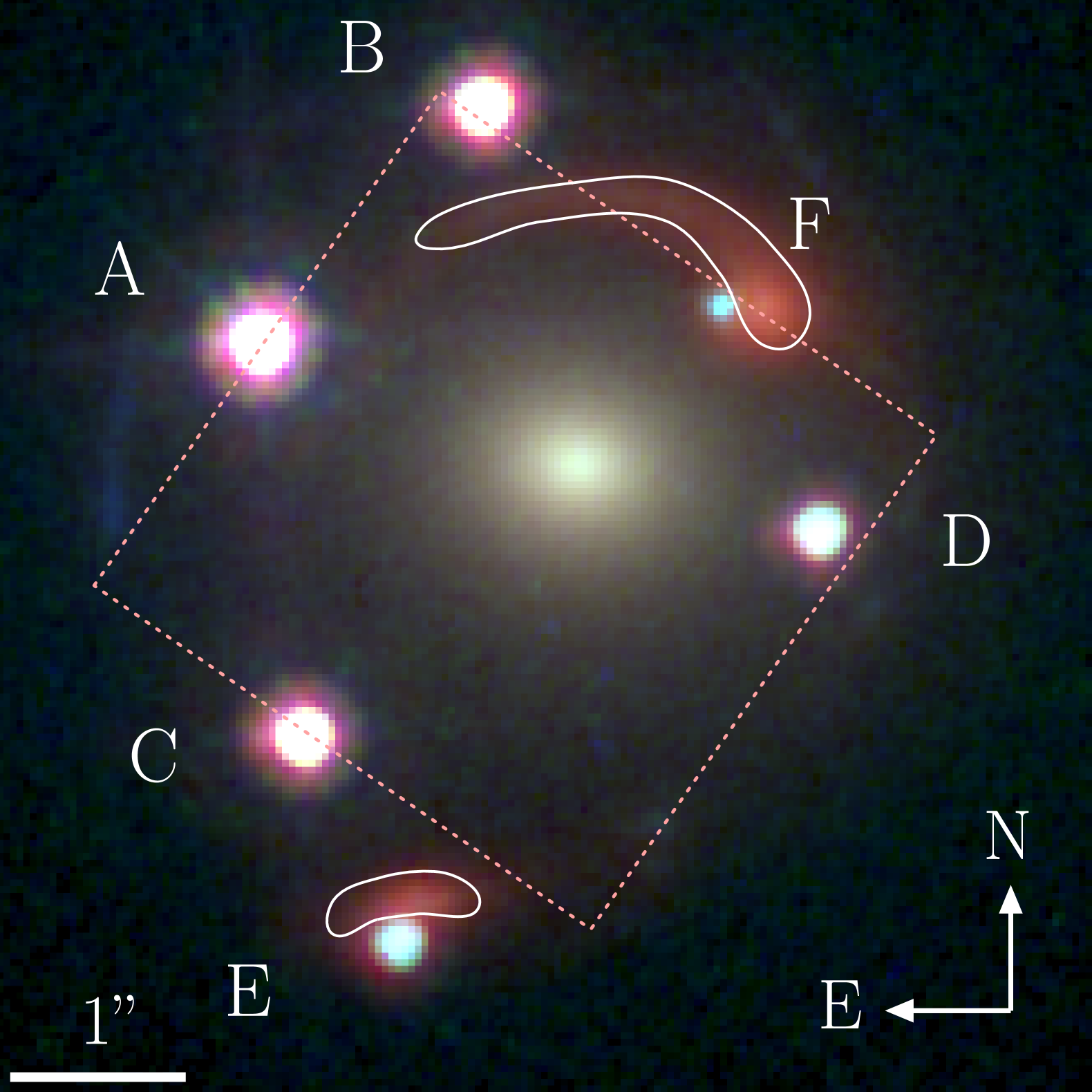
Figure 5: Dux et al. (2024)
Zig-zag lens
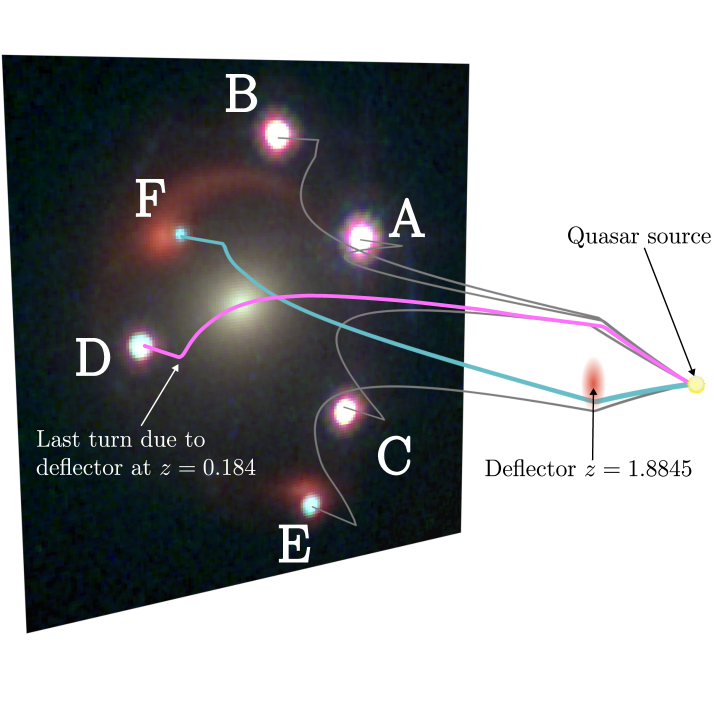
Figure 6: Dux et al. (2024)
Zig-zag lens model
- Brute-force trial matching
- feasible due to lensing degeneracies
- as demonstrated by Morningstar et al. (2019)
- Raytracing and lens matching by UZH group
\begin{equation}
\begin{aligned}
x_1 &= D_{01} \, \theta \\
x_2 &= D_{02} \, \theta - D_{12} \, \hat\alpha(x_1) \\
x_3 &= D_{03} \, \theta - D_{13} \, \hat\alpha(x_1)
- D_{23} \, \hat\alpha(x_2)
\end{aligned}
\end{equation}
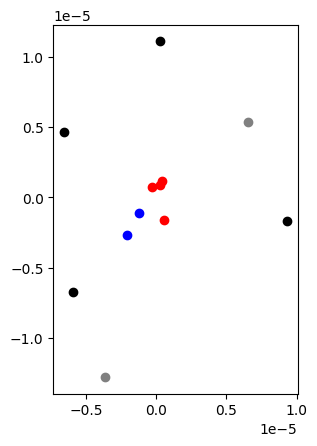
Summary: Importance for SKA?
- Good preparation for what's to come…
- VLBI & SKA-MID: Band 2/5/6
- extended AGN jets on sub-parsec scales
- CO (1–0) maps (Band 6 ~ ALMA scales)
- sub mJy/beam arcs (\(\approx\) 5 mas) → nature of dark matter
